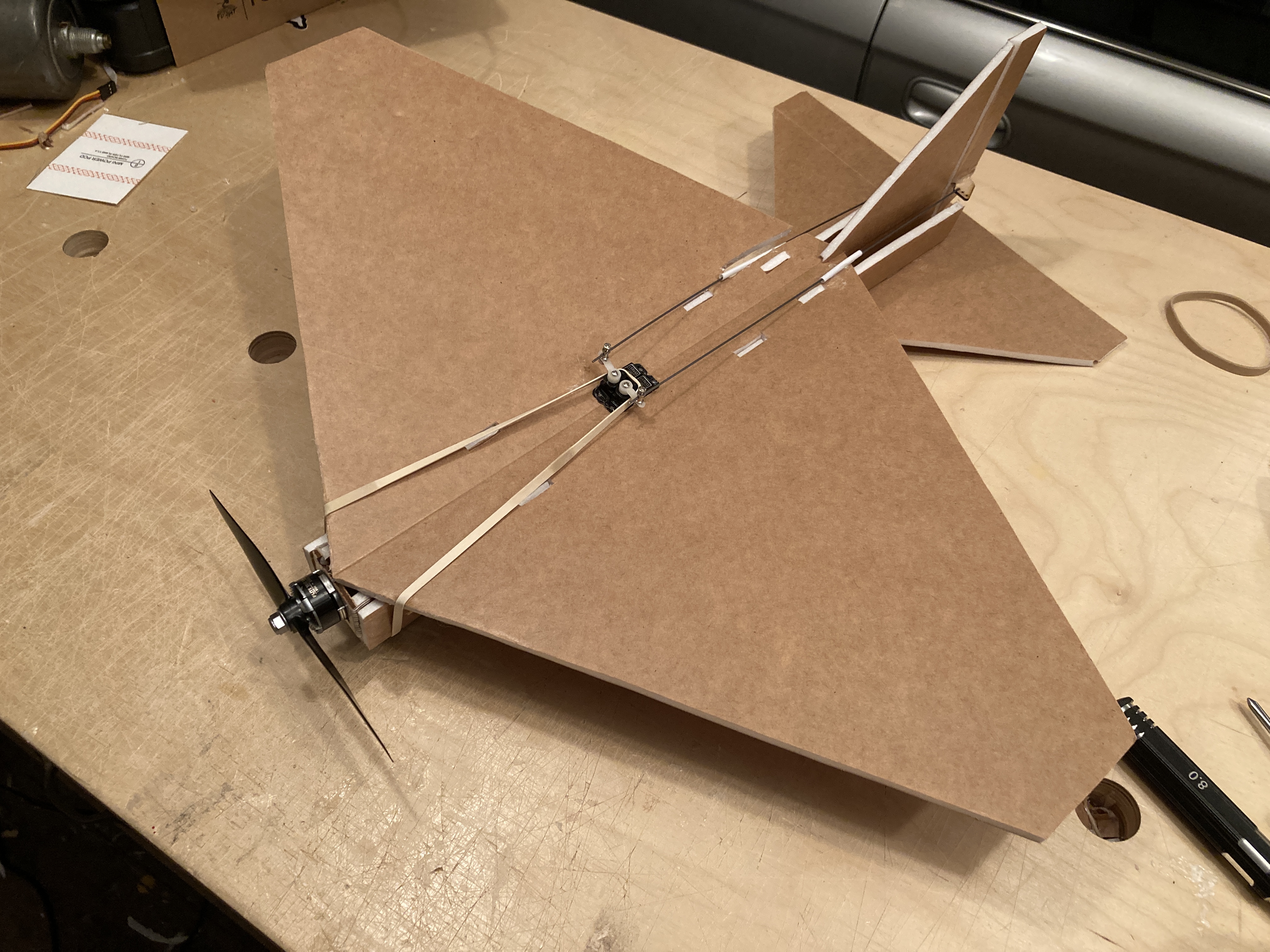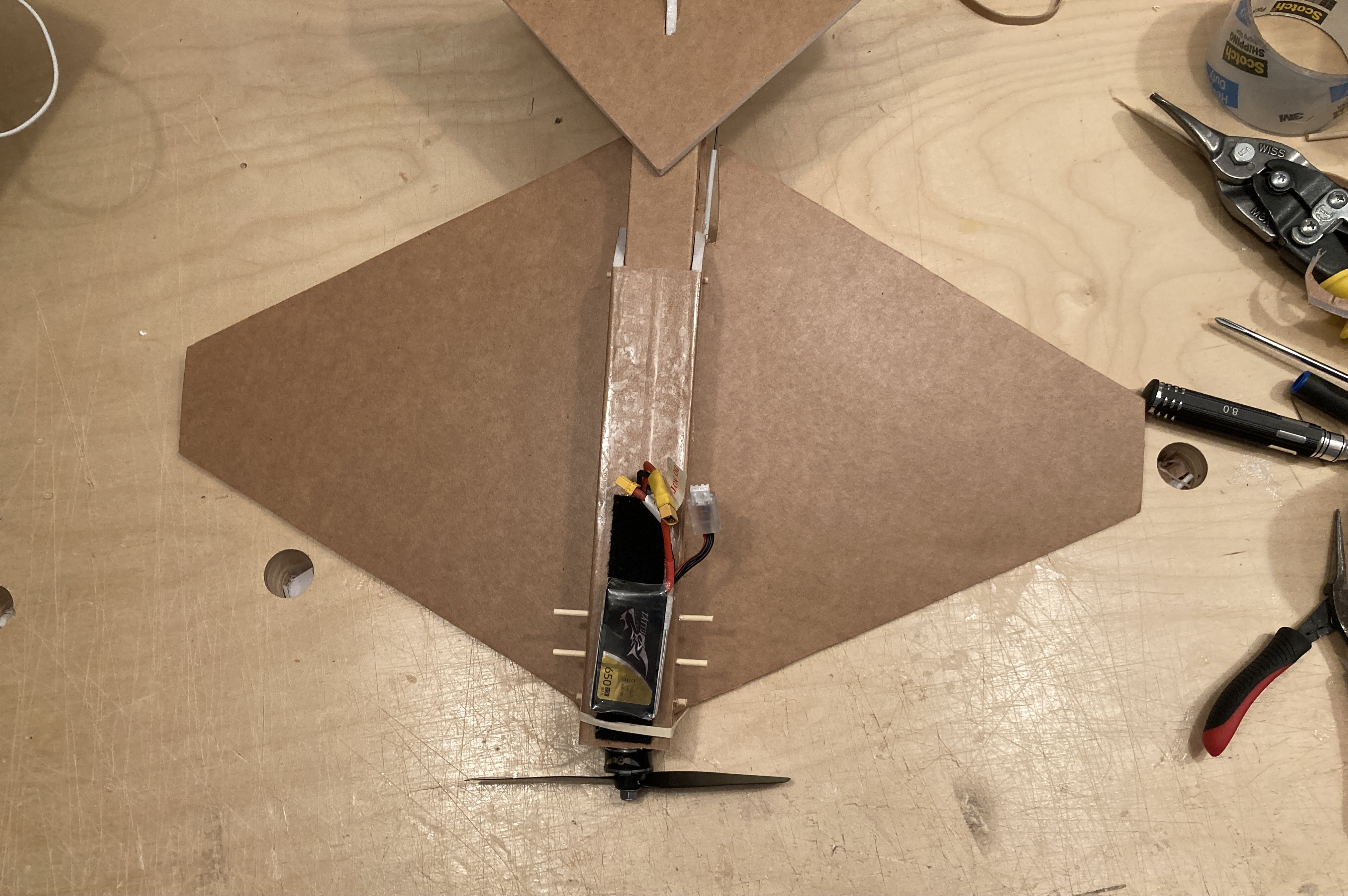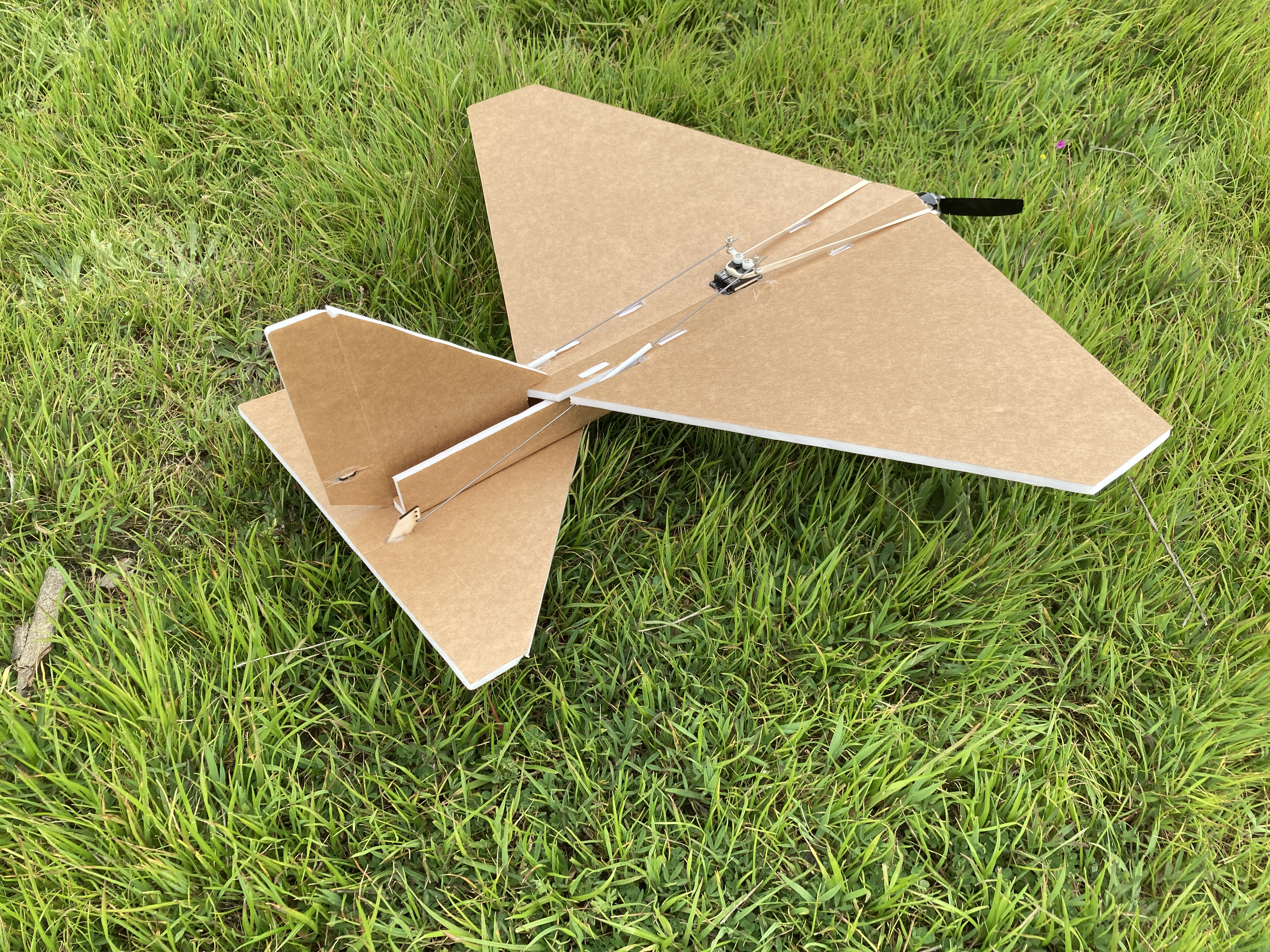- Type
- Build Plan (PDF, AI, etc.)
This is a Mighty Mini-sized (19.5 inch wingspan) version of the FliteTest FT Flyer. It's a three-channel plane, with just throttle, elevator, and rudder control. It will fit on one sheet of foam, and it's simple to build. If you get lost, you could try watching the build video for the full-size FT Flyer on YouTube, or you could ask in the discussion associated with this resource or in the build thread I've linked further down.
Recommended Electronics:
Power Pack A (or an equivalent)
4 channel receiver
2 cell battery
Flight Characteristics:
The Mini Flyer is very short-coupled, as the tail sits right behind the wing. This makes it an energetic little plane, and if you start with a bit of forward airspeed, it can do a nice, tight loop. This aggressive response can also be a bad thing, though, so using some type of dual rates, at least for the rudder, is a good idea. I found that using expo made it harder to fly.
The thrust-to-weight ratio with the setup I've used is around 1:1, so it can almost hover and climb vertically, although it spins around a lot when you try. The TWR makes the Mini Flyer pretty stable at a high angle of attack, and move around at jogging speed.
So if your control inputs are gentle, it will cruise around nicely like a Mini Speedster. Basically, it's a small trainer, with a couple tricks (literally) up its sleeve.
Development/Build Thread:
https://forum.flitetest.com/index.php?threads/mini-ft-flyer.64852/
Pictures:



---
Please remember that these plans are not for commercial use.
Recommended Electronics:
Power Pack A (or an equivalent)
4 channel receiver
2 cell battery
Flight Characteristics:
The Mini Flyer is very short-coupled, as the tail sits right behind the wing. This makes it an energetic little plane, and if you start with a bit of forward airspeed, it can do a nice, tight loop. This aggressive response can also be a bad thing, though, so using some type of dual rates, at least for the rudder, is a good idea. I found that using expo made it harder to fly.
The thrust-to-weight ratio with the setup I've used is around 1:1, so it can almost hover and climb vertically, although it spins around a lot when you try. The TWR makes the Mini Flyer pretty stable at a high angle of attack, and move around at jogging speed.
So if your control inputs are gentle, it will cruise around nicely like a Mini Speedster. Basically, it's a small trainer, with a couple tricks (literally) up its sleeve.
Development/Build Thread:
https://forum.flitetest.com/index.php?threads/mini-ft-flyer.64852/
Pictures:



---
Please remember that these plans are not for commercial use.
